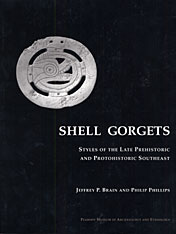The Passage ~ Chattanooga public art
|
2005 April ~ Members from Team Gadugi from Locust, Okla., will be in Chattanooga on Thursday to install the seven ceremonial disks along the wall of The Passage. Team Gadugi, which means working together in Cherokee, were chosen to design and install the public art that will become a permanent part of The Passage. The Passage is a pedestrian walkway located underneath Riverfront Parkway that connects Ocean's Journey to the Tennessee River. Each disk's symbol has an important and particular meaning to the Cherokee culture. Peggy Townsend, [City of Chattanooga] public art coordinator states, "Team Gadugi has designed a historically significant, special, and beautiful place that will be enjoyed for generations. Through public art, The Passage commemorates the Trail of Tears and celebrates Cherokee culture, symbolism and mythology." ~ chattanoogan.com 2005 apr 27 see also Public Art Archive.org
|
| | |||||||||||||||||||||||||||
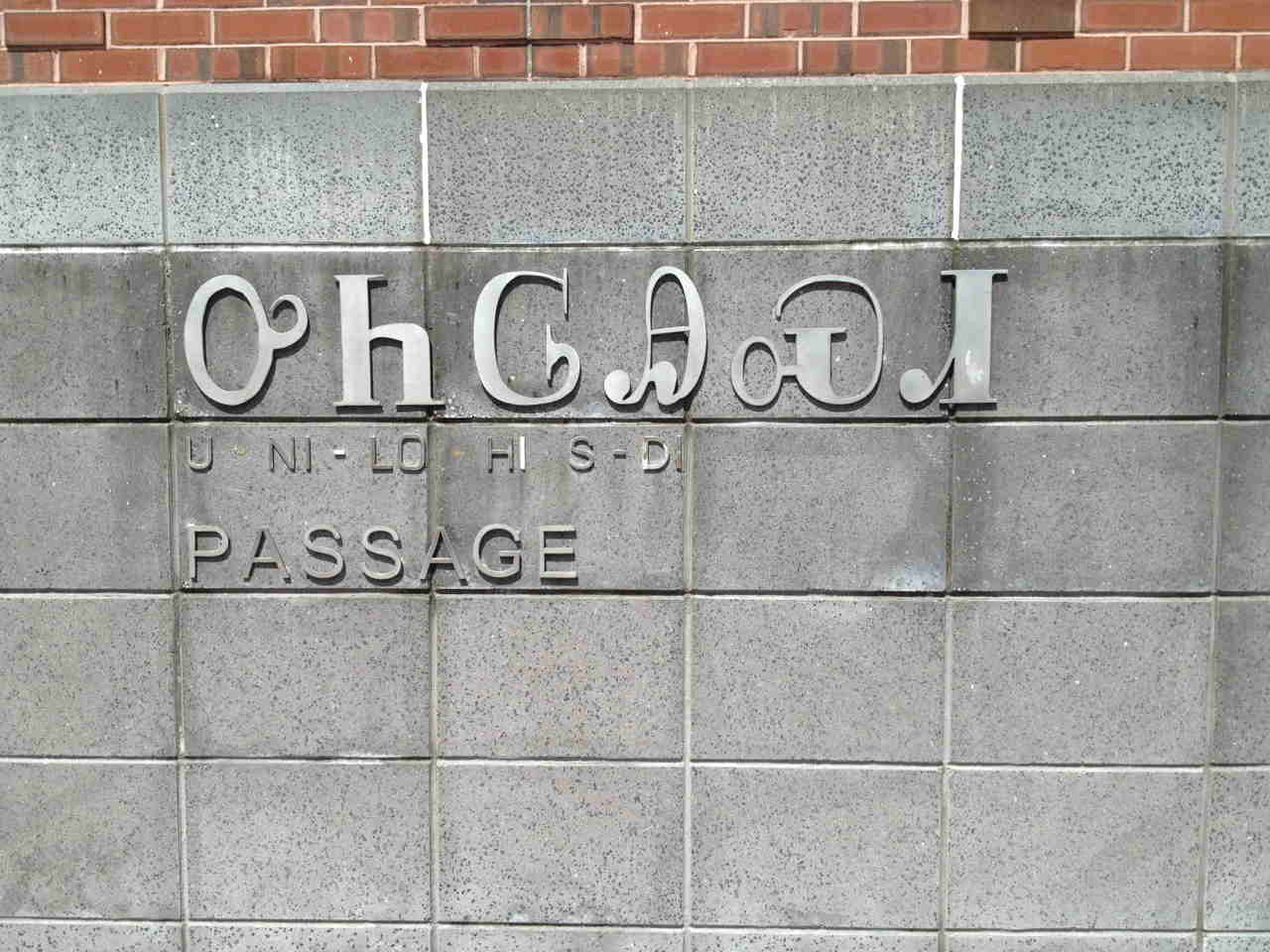 |
0a
U NI - LO - HI S - DI
The Passage - Ross's Landing, 1 Market Street, Chattanooga, Tennessee 37402 | ||||||||||||||||||||||||||
| | |||||||||||||||||||||||||||
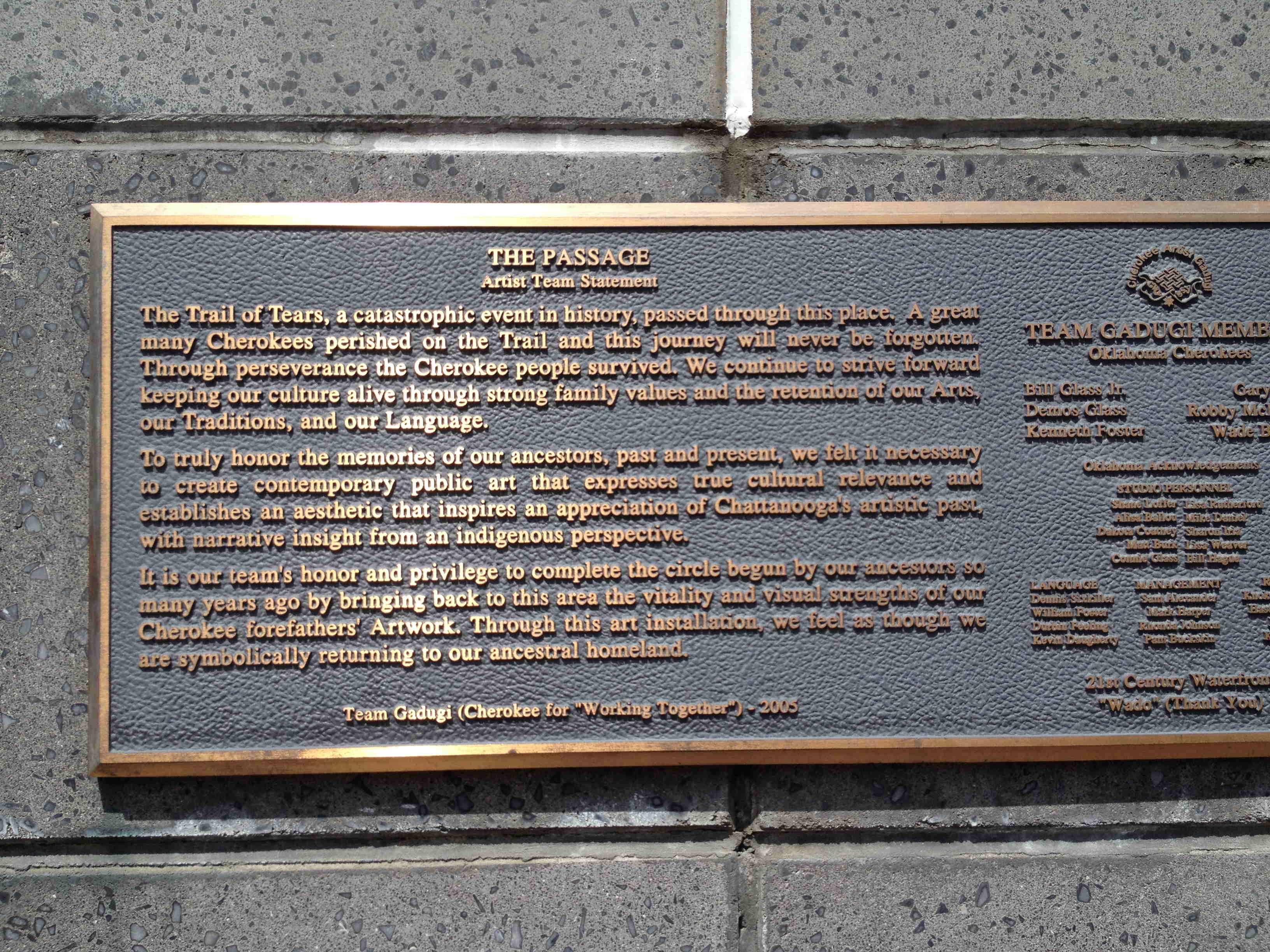 |
0b THE PASSAGE Artist Team Statement The Trail of Tears, a catastrophic event in history, passed through this place. A great many Cherokees perished on the Trail and this journey will never be forgotten. Through perseverance the Cherokee people survived. We continue to strive forward keeping our culture alive through strong family values and the retention of our Arts, our Traditions, and our Language. To truly honor the memories of our ancestors, past and present, we felt it necessary to create contemporary public art that expresses true cultural relevance and establishes an aesthetic that inspires an appreciation of Chattanoga's artistic past, with narrative insidght from an indigenous perspective. It is our team's honor and privilege to complete the circle begun by our ancestors so many years ago by bring back to this area the vitality and visual strengths of our Cherokee forefathers' Artwork. Through this art installation, we feel as though we are symbolically returning to our ancestral homeland. | ||||||||||||||||||||||||||
| | |||||||||||||||||||||||||||
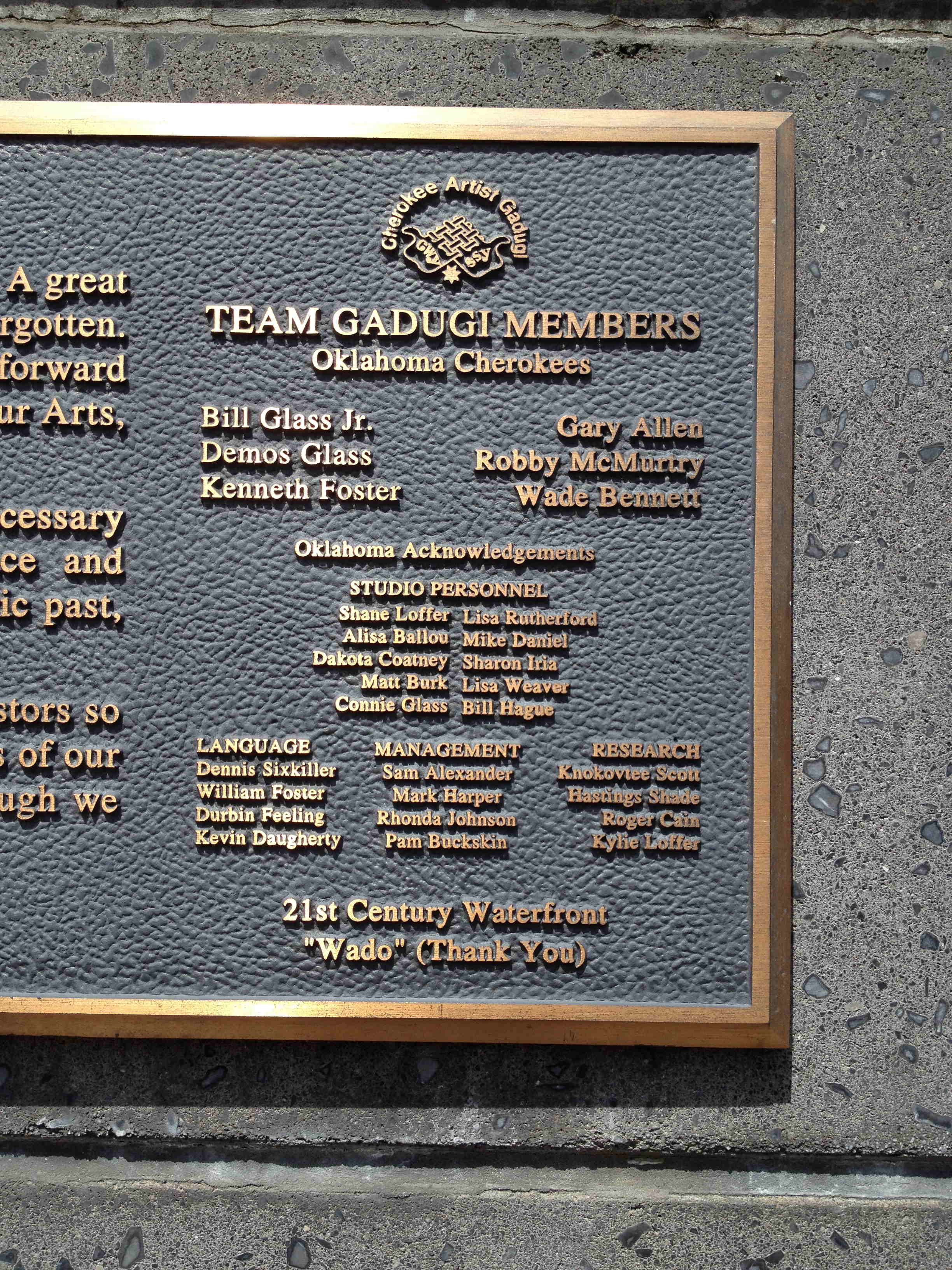 |
0c Cherokee Artist Gadugi [two hands, interlocked fingers, CWY $SY]
21st Century Waterfront | ||||||||||||||||||||||||||
| | |||||||||||||||||||||||||||
| G O R G E T
The problem: the Cherokee/Tsalagi were not & are not culturally-affiliated to this Mississippian art, to these shell gorget religious imagery and designs. |
C U L T U R A L
|
T H E F T
Shell gorgets: styles of the |
| | ||
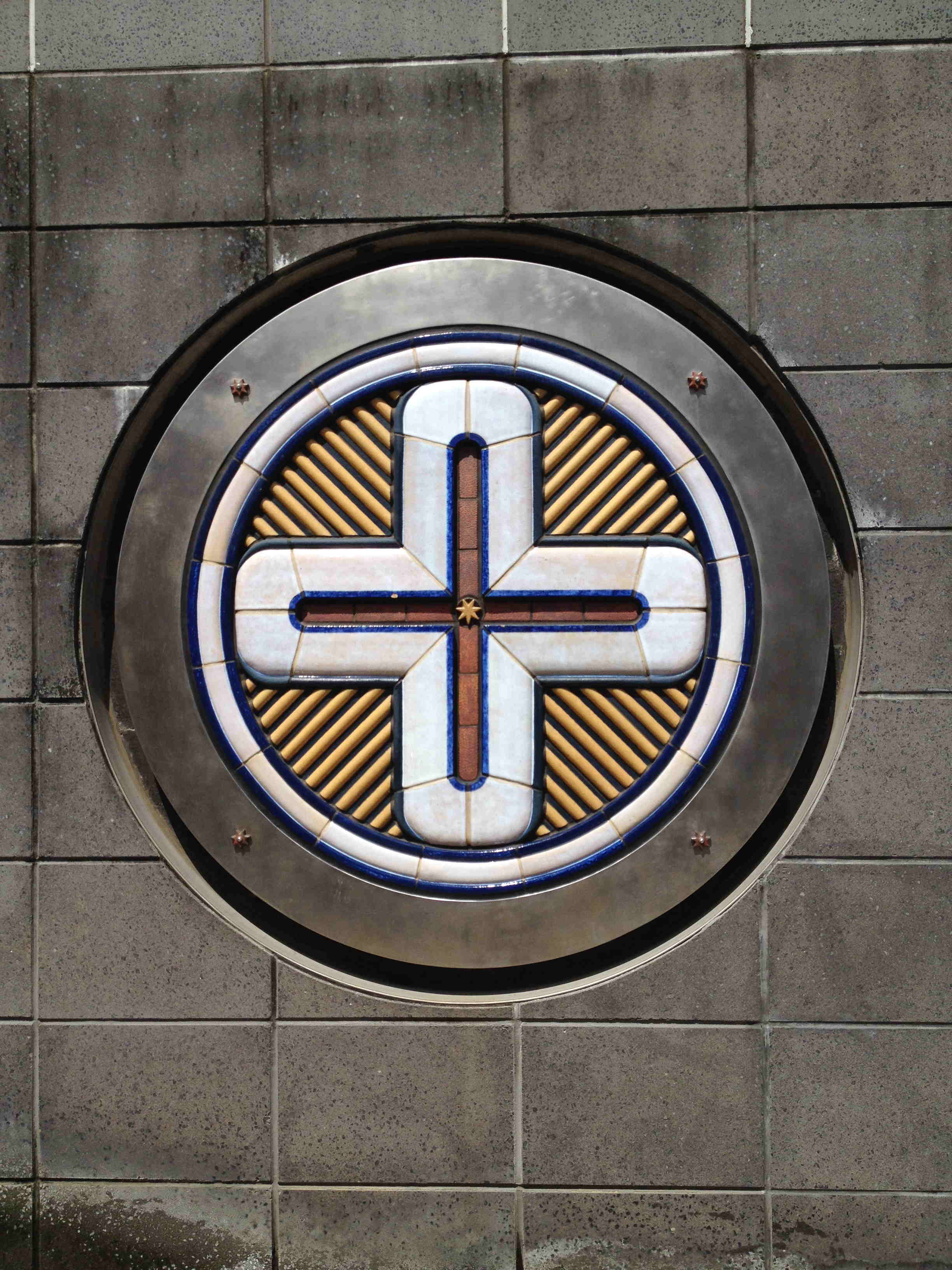 |
1 NV-DA GA-SA-QUA-LV SUN CIRCLE Ruffner style - circa 800 CE From the Early Mississippian period, this stylized design symbolizes the Holy Sun in the form of a sacred fire sent by the Creator. The outer circle represents eternity where the spirit goes after death and exists forever. The central cross depicts the four logs that keep the sacred fire alive. The star refers to the 7 Cherokee Clans. It is said Cherokees will survive as long as the sacred fire burns. the Four Directions [+ simple cross] |
1 · Cross / Cruciform Ruffner Style - cross in a double circle Tenn-Hm-C2 from Citico Tenn-Hm-H16 from Hixon Tenn-Hm-X9 unidentified site in the vicinity of Chattanooga Younge Style - cross-in-circle + cross is fenestrated (cut out, open) Ky-Ch-X1 |
| | ||
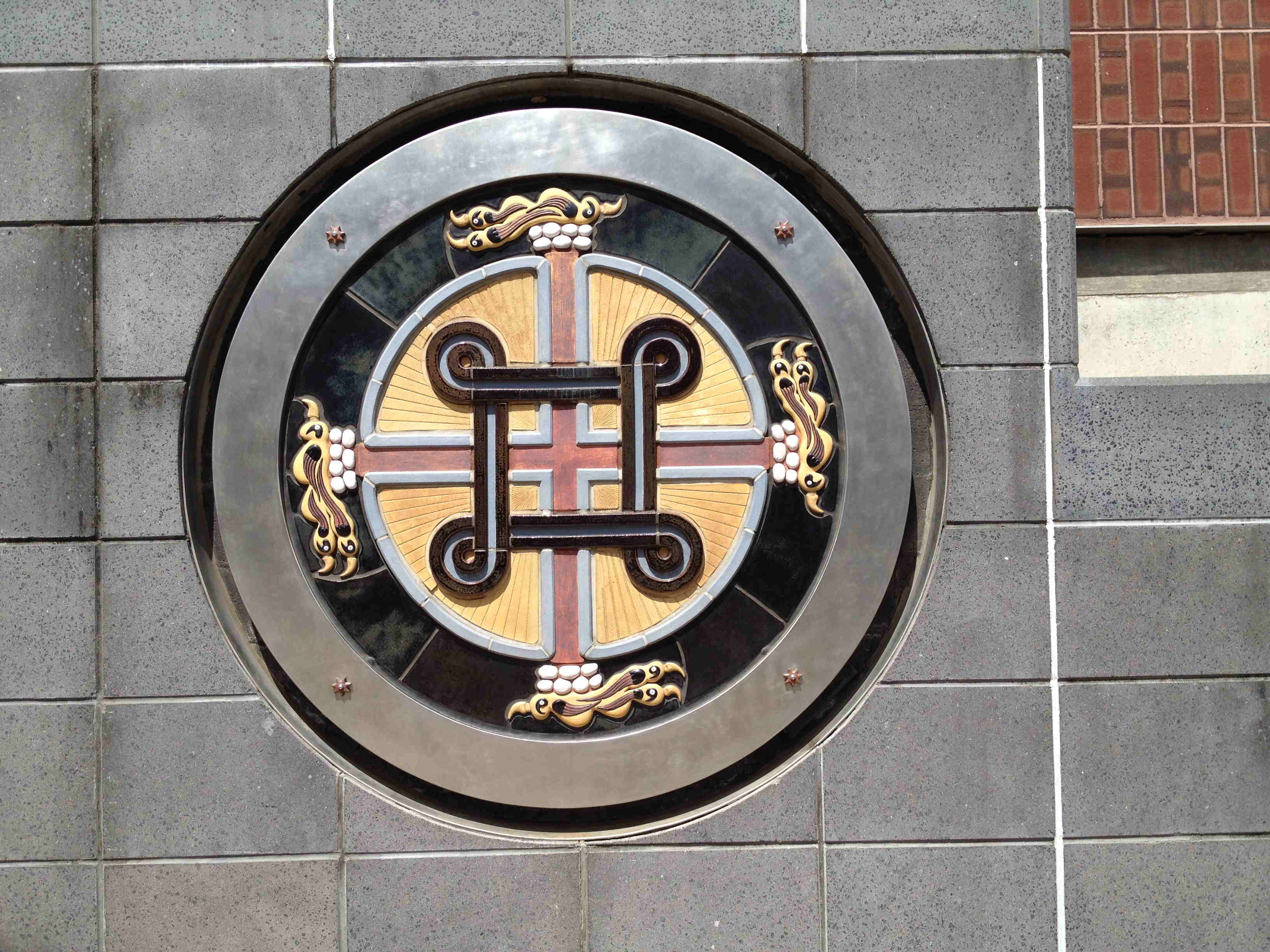 |
2 NV-GI WU-NI-LO-SV FOUR JOURNEY DIRECTIONS Bennet Crib-Cox Mound style - circa 900-1000 CE This refined symbol, dating from the early Mississippian period, directions the Cherokee would travel. Like birds of flight, they endured endless migration; North from their ancestral homeland; East toward the rising sun to a land that was only temporary; South where peace and contentment reigned for fourteen generations; and West where great upheaval, death, and sorrow awaited. [square w/circles at outside corners, on a cross(+) with what look like eagle talons (two to the right, one to the left) with seven eggs/white oval rocks.]
|
2 · Square Bird (style) - Ala-Ja-C1 Cox Mound style with "looped square" of two dark lines (= 4 lines, traditional) p9 - usually with woodpeckers' heads perpindicular to each of the square's lines. aka 'four-square', 'crib motif', 'classic square cross design', 'corner circle', 'looped square', found in the Tennessee and Cumberland River systems, but completely absent in east Tennessee (eg, Chattanooga). |
| | ||
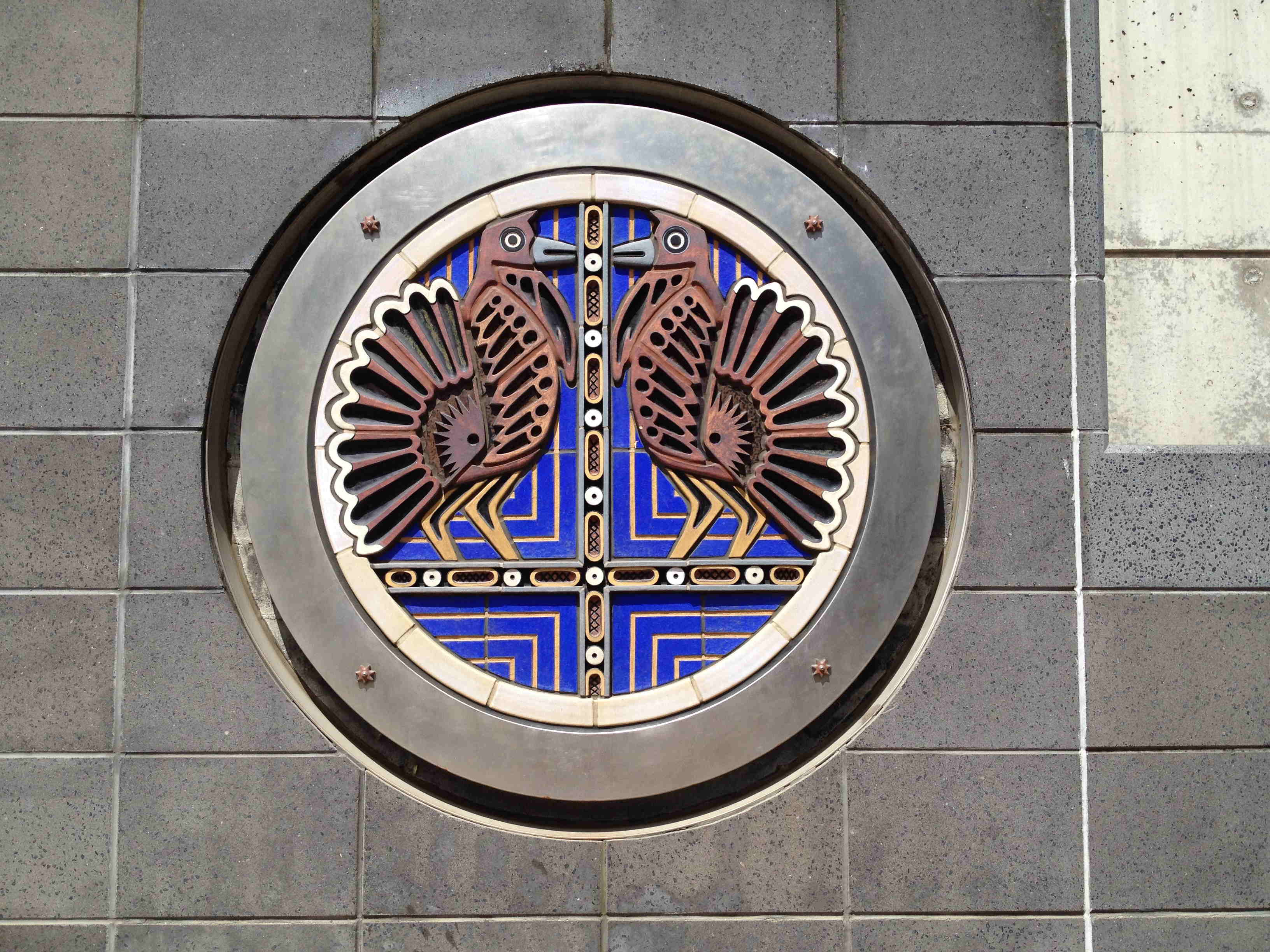 |
3 DI-NA-TLI-HI A-NI-TSI-S- WARRIOR BIRDS Hixon style - circa 1100 CE At the cultural peak of the middle Mississippian period, designs of two facing wild turkeys appeared. They symbolize the players of the opposing sides of the stickball game, known as the "Little Brother to War." When a player threw the ball towards his goal, he would make a war whoop of the turkey gobble. The design also signifies the two facing mountains along the Tennessee River where Chattanooga is today. [two turkeys/grouse facing each other on a low cross] |
3 · Two Turkey Cocks Ala-MA-H13 from the Hobb's Island site in Madison County, northern Alabama Tenn-Mi-X4 unidentified site in Marion County, southeastern Tennessee - most elaborately detailed and precisely engraved of the group. Hixon style "turkey cocks design"(Kneberg 1959) basic structure: bilateral symmetry, a cross with lowered horizontal bar. |
| | ||
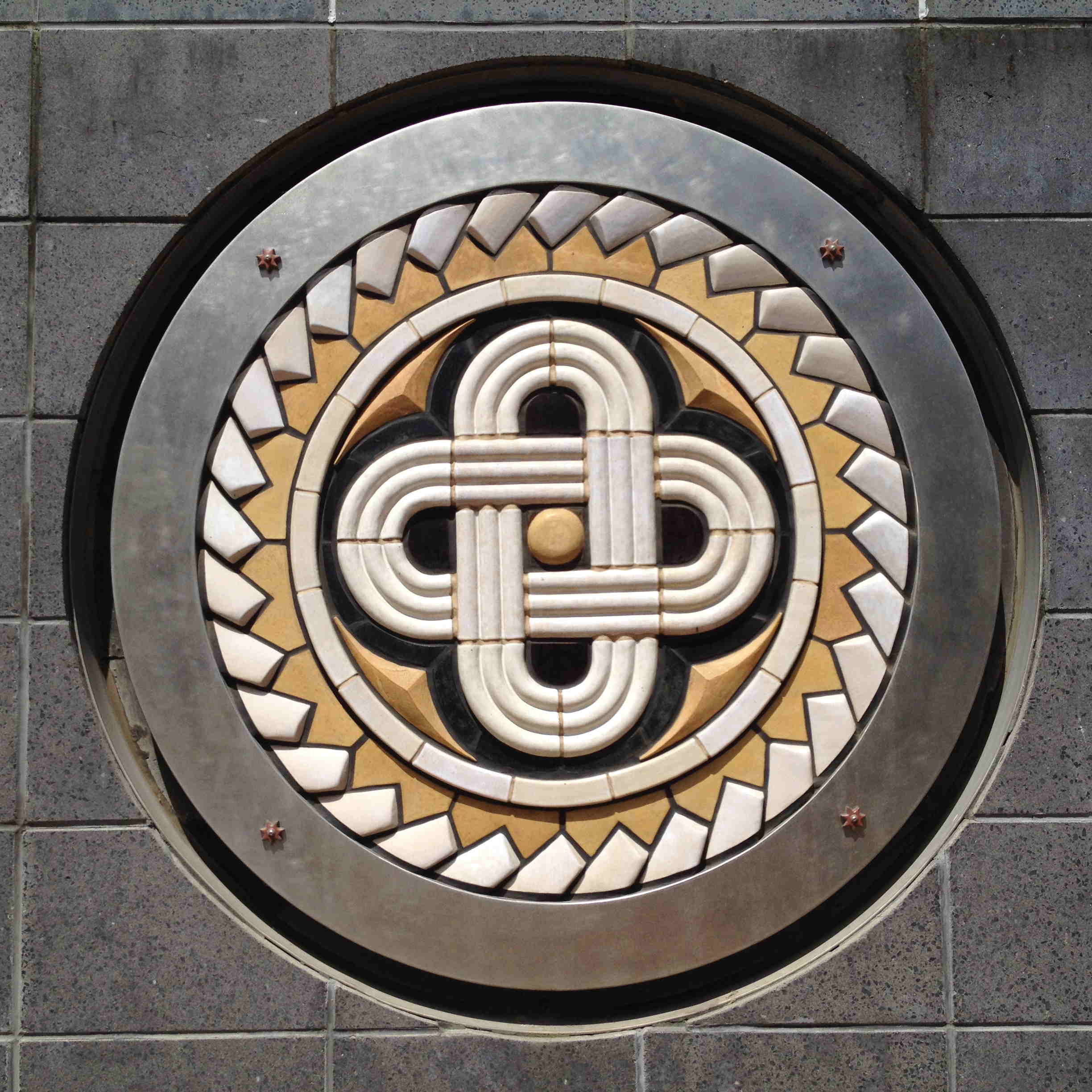 |
4 DU-TLO-SV CONNECTIONS Russell style - circa 1390 CE This reworked design of the late Mississippian period represents the two roads that Indian people must travel. One is man's time on Earth, the Red Road or Indian Way. The other is the White Road of Eternity, which is guided by one's spirituality. The circles begin at the time when we are conceived and the time when we cross over into the spirit world. Unity is shown by the basket weave pattern that is formed. [two perpindicular oval loops]
|
4 · Interlocked Ovals Russel Style fenestrated cross in a circle - filfot cross/fylfot Ky-Ru-X1 unidentified site in Russell County, southern Kentucky |
| | ||
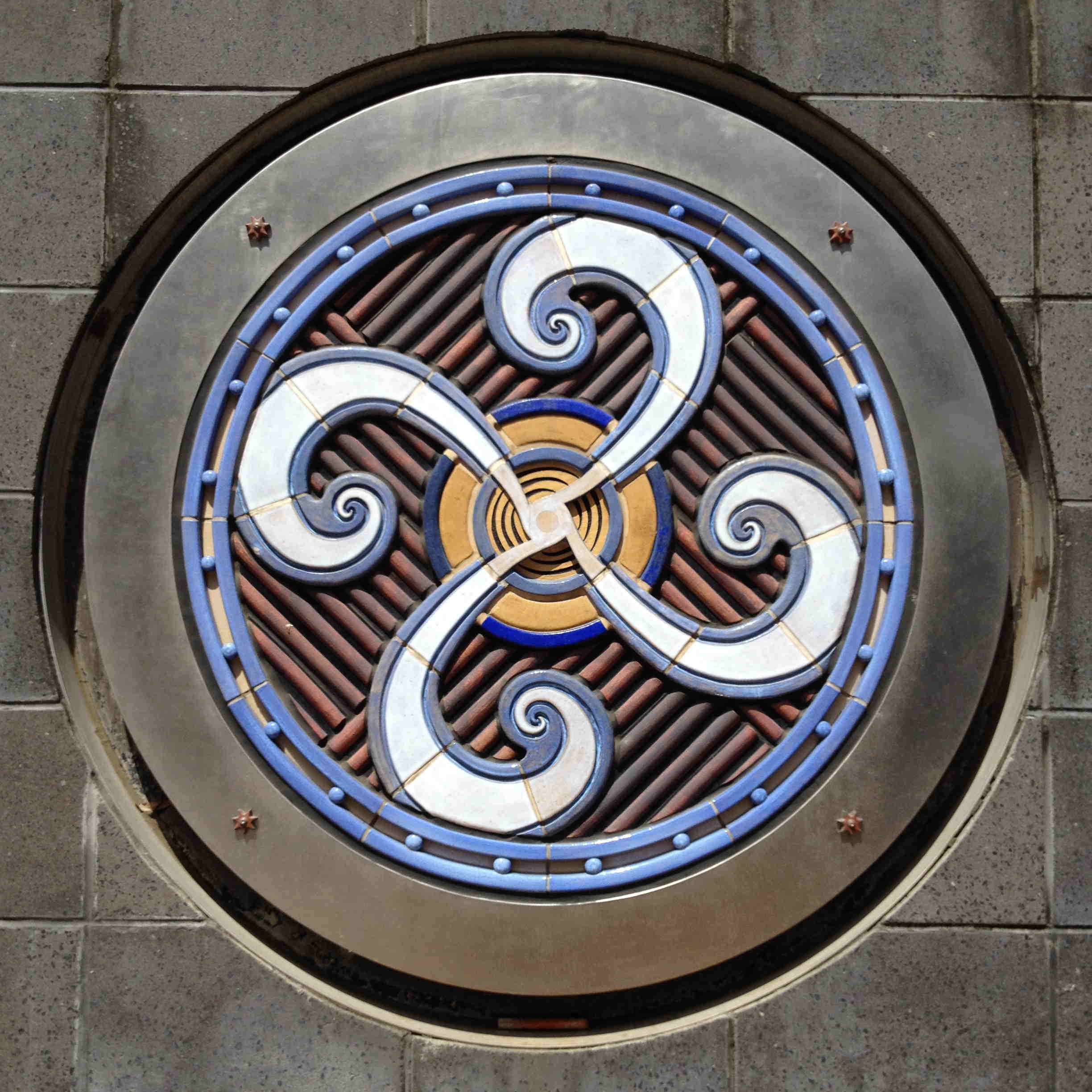 |
5 A-TLA-NI-GI-DA GV-HI-NI-DA STRENGTH OF LIFE Nashville II style - circa 1400 CE From the Mississippian and early Proto-Historic periods, this stylized design is symbolic of the Cherokee's spiritual counter-clockwise Stomp dance around the sacred fire. The smoke from the fire rises upward to the Creator and carries with it songs and prayers for strength in their lives. It also represents the spirit rotation of the Milky Way and Earth's changing weather patterns. [curved swastika]
|
5 · Diagonal Swirling Swastika Nashville II Tenn-Ch-X1 Cheathma County, Tennessee similar Triskele, Foster Place, Lafayette County, Arkansas Ark-La-FP1 p415, Ala-Tu-M72 p333 |
| | ||
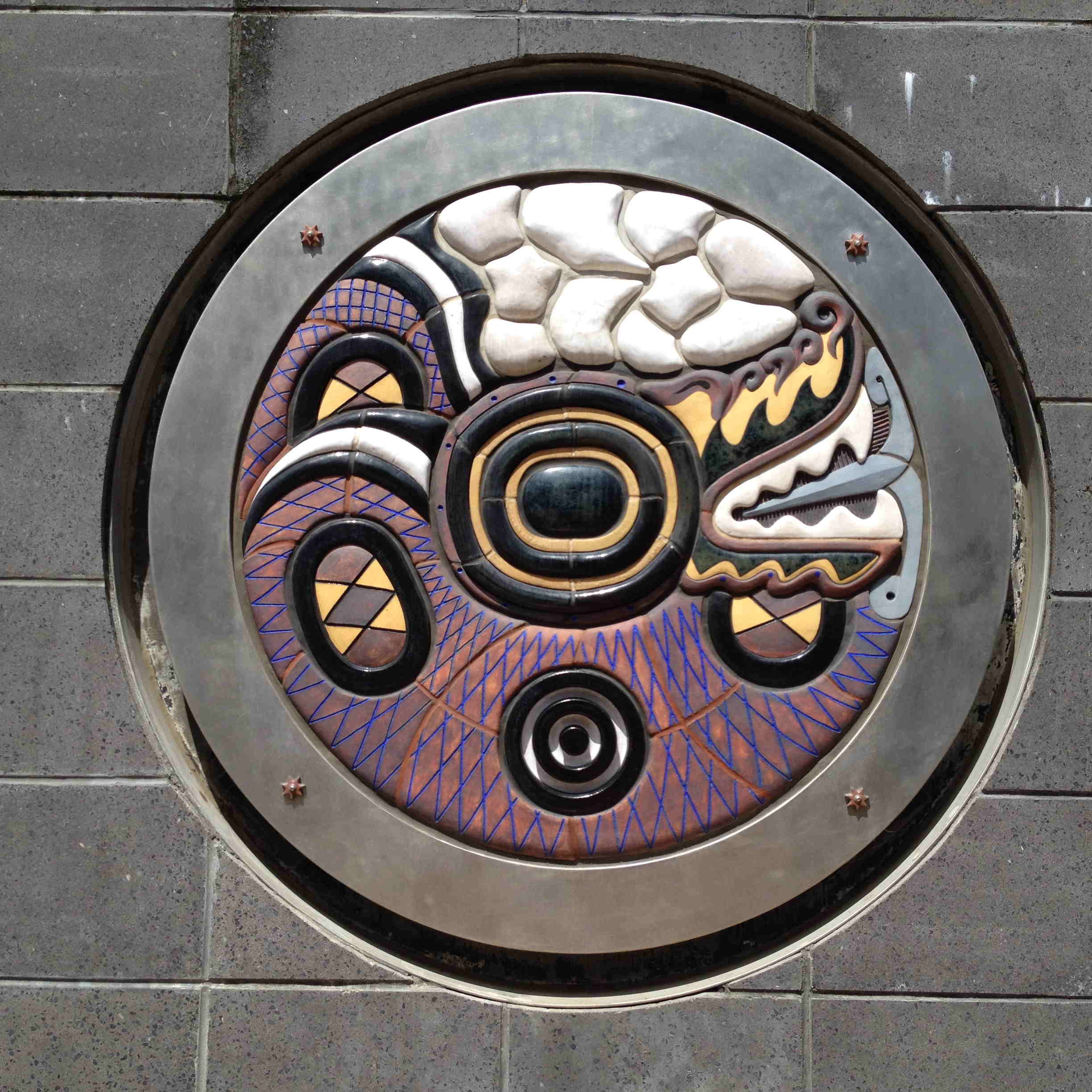 |
6 U-DA-QUE-HI-NV I-NA-DA-I-YU-S-DI COILED SERPENT Citico-Lick Creek style - circa 1600 CE This middle to late Proto-Historic period symbolic design represents So-Le-Ge-I, or Winged Serpent, who flew down from the sky, he was the source of ancient wisdom and traditional teachings for the Cherokees. The motif was used during the times of cross-cultural exchange and signifies the return to traditional customs to stop the loss of ancient knowledge and more tribal lands. [central eye - ovoid with two concentric black ovoids, a mouth with sharp teeth and protruding tongue to the right; a snake rattle in white above the eye; one complete and two partial diamond-design ovoids on the body, with a black dot with two concentric black circles on a white background below the eye.] |
6 · Coiled Rattlesnake Lick Creek Style Tenn-Gn-LC3 Brakebill Style > highest concentration & obvious homeland: eastern Tennessee. |
| | ||
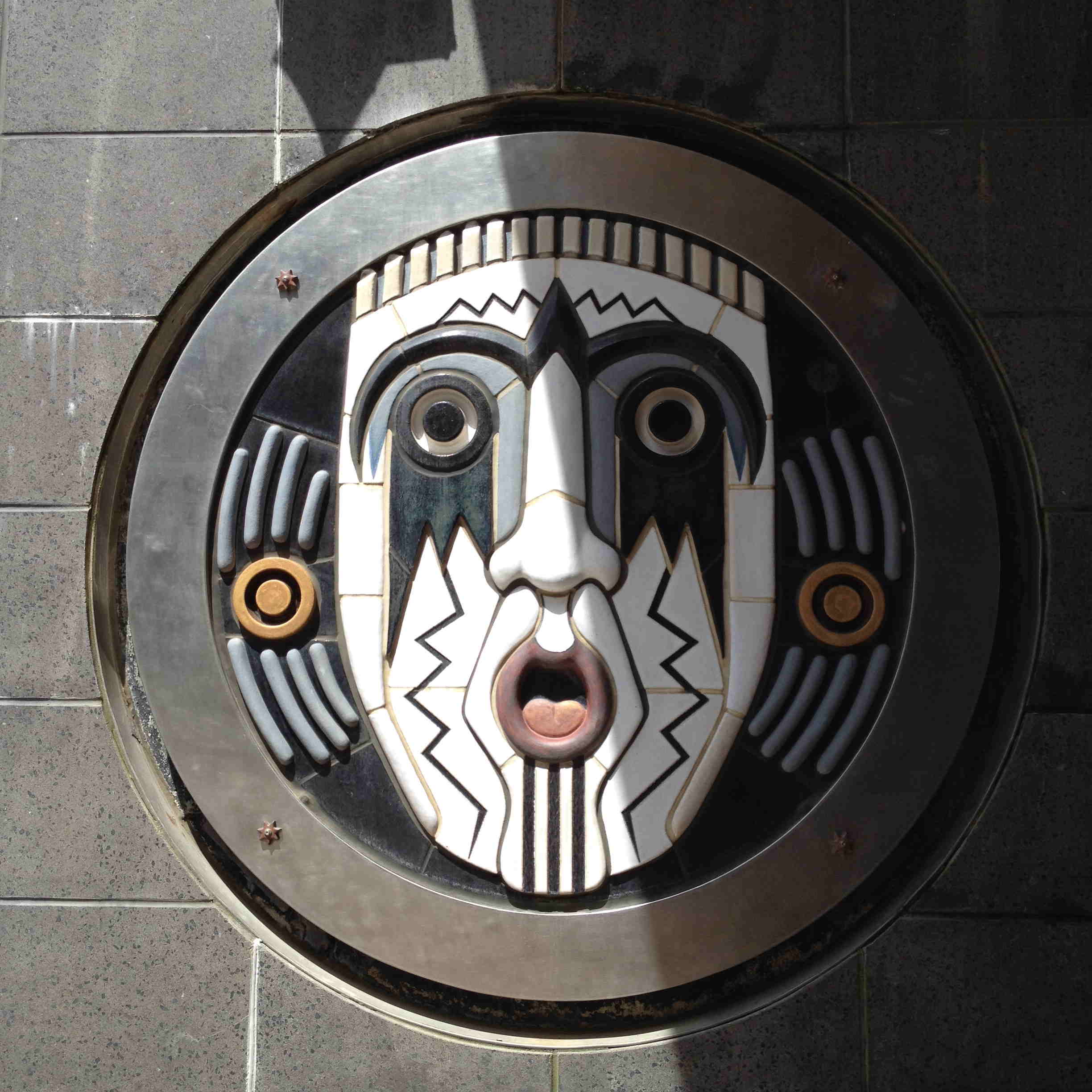 |
7 -LA-GV-DU-LO A-TLO-HI A-GA-DO-LI WEEPING EYE MASK Chickamauga-Buffalo style - circa 1700-1800 CE From the early Proto-Historic period, this motif is representational of the falcon warrior. Made from the lightning whelk shell used in ancient purification rituals, these masks were used to honor [Cherokee] Dragging Canoe's fallen warriors in their 17 year resistance to colonial expansion. They were believed to have the power to protect the wearer from harm during battle and were also worn during the cleansing ceremony. FORKED EYE / 'Southern Ceremonial Complex' [bird-shaped unibrow, descending tri-forked eyes, open mouth, white mask, with 16 short lines on top, like hair. two circled disks on each side, left and right, with four diagonal lines on each upper and lower side (like spiders)]
|
7 · Forked Eye Mask Buffalo Style - drilled eyes, carved nose, drilled mouth, forked eye surrounds, zig-zags down cheeks to chin & in hairline |
| | ||
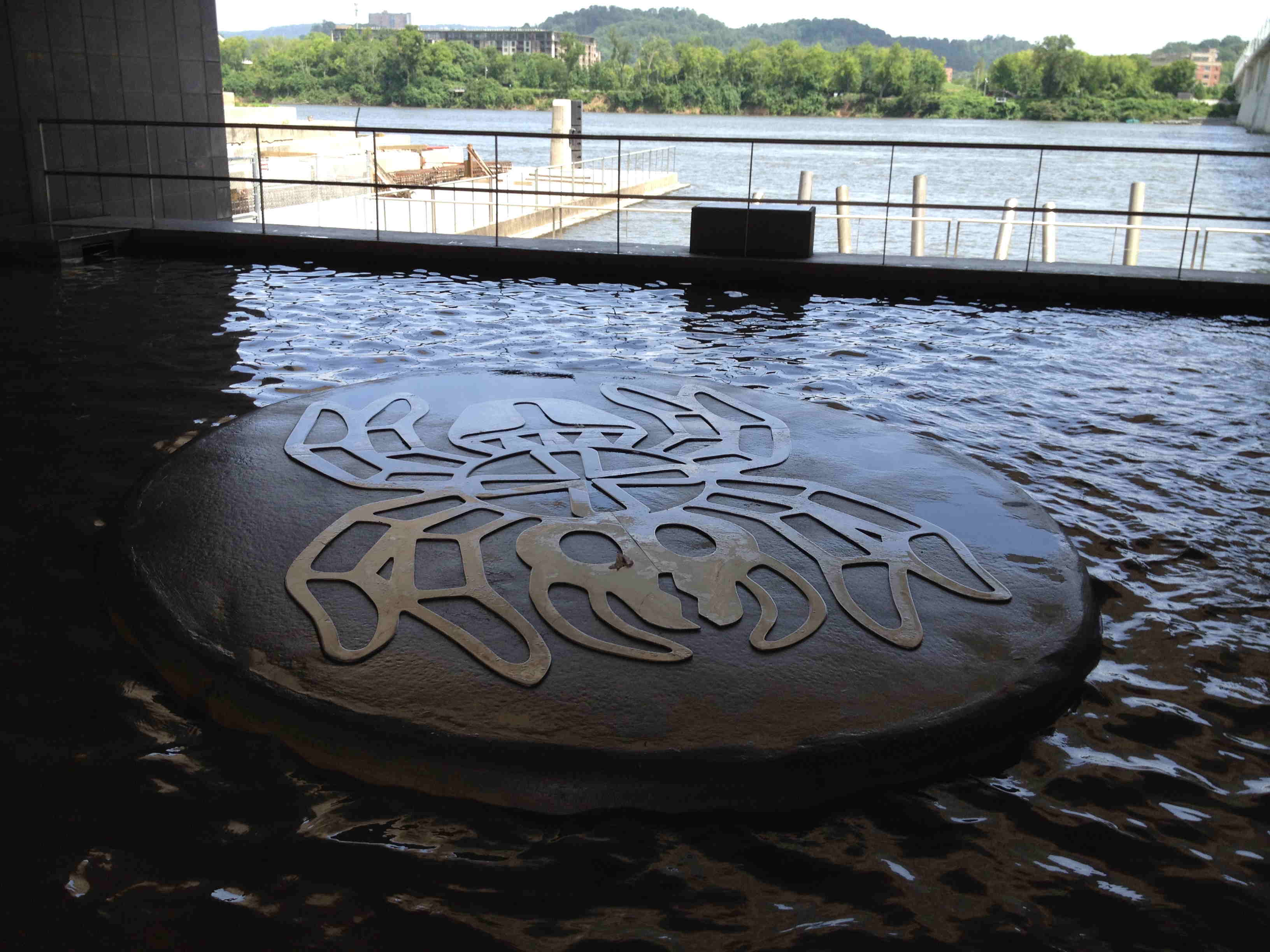 |
8 U-S-TI DI-LI-S-DO-DI LITTLE WATER SPIDER Orton style - circa 1250 CE This depicts a mid-Mississippian period design. Little Water Spider carried the Sacred Fire to the Cherokees and for this deed received the gift of prophecy from the Creator. She foretold that one day the Cherokees would go west and suffer death, which came about in 1838-39 when nearly one-fourth of all the Cherokees perished on the Trail of Tears. The Sacred Fire was carried west where it still burns today. [3-sectioned spider] |
8 · Spider an anatomically-correct spider body has 2-parts: cephalothorax & abdomen. this gorget version separates the head & thorax, making a conjoining central cruciform thorax that all spider gorgets have. only 1 McAdams in Tennessee: Tenn-Hr-Th6 from the Thompson site - northwest Tennessee Orton Style - Tenn-Hm-H11 from the Hixon (Chattanooga) site ... "most naturalistic spider" |
| | ||
|
9 Stickball Players Artist: Robbie McMurtry Date: 2005 Location: The Passage Ross's Landing Placement: water features Collection: City of Chattanooga Artwork Type: outdoor sculpture Material: stainless steel | ||
| | ||
|
NB: "A.D." stands for Anno Domini - 'the Year of our Lord'. 'A.D.' & 'B.C' - Before Christ, its pre-Jesus complement, base time in a euro-centric Christian-based dating system whose religious terms are inappropriate to impose on non-Christian Native American Indian time. The 'AD' appelations have been changed accordingly to the secular & non-sectarian 'CE' for 'Common Era' ('BCE' for 'Before Common Era').
· transcribed from The Passage, Chattanooga.
| ||
